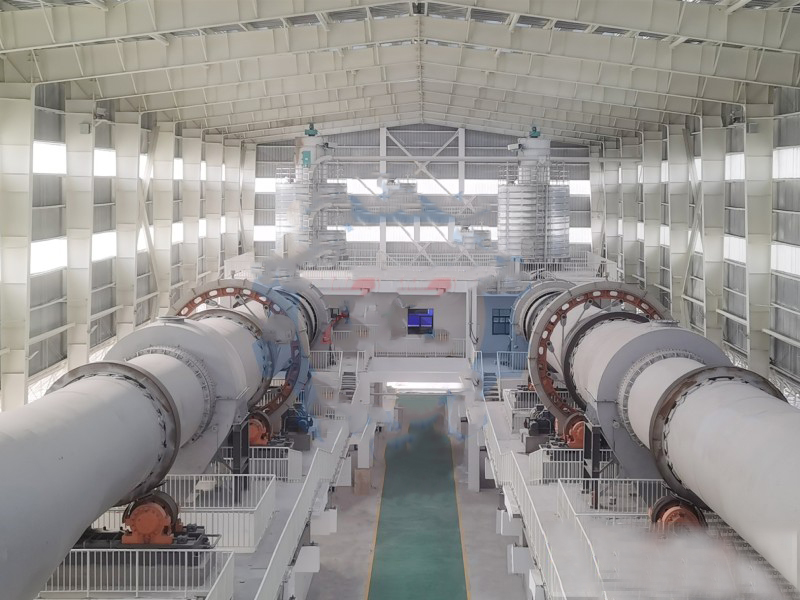Ceramic particle production process: Green and environmentally friendly, contributing to sustainable development in the future
In the fields of construction, environmental protection and industrial applications,ceramsite is gradually becoming an important component of modern material technology due to its excellent properties such as light weight, high strength and porous structure. The production of ceramsite is not only a technology-intensive process, but also a model for promoting resource recycling and achieving low-carbon development. Our company will take you to deeply understand the core production process of ceramsite and the green innovations behind it.
I. The five core steps in clay aggregate production, laying the foundation for high-performance products
Although the production process of ceramsite varies slightly depending on the raw materials, it can generally be summarized into five key steps to ensure the high quality and stability of the product.
Raw material processing
The raw materials (such as clay, fly ash, sludge, shale, etc.) are crushed, sieved or mixed according to their types. For example, clay needs to be crushed to 100-200mm and homogenized; urban sludge is usually mixed with fly ash and clay in proportion, and undergoes natural dehydration for 15-20 days in a conditioning landfill to improve its molding performance.
Granulation and molding
Using a pair-of-roll granulation machine or a ball-making disc equipment, the raw materials are pressed or rolled into particles ranging from 5 to 10 mm in size. For fly ashceramsite, the slurry ball-making process is adopted; while for sludge ceramsite, the strong squeezing of the pair-of-roll granulation machine is relied upon to form uniform particles.
Preheating and sintering
The particles are introduced into the rotary kiln or sintering machine and undergo swelling or sintering at a high temperature range of 1000 - 1170℃. The swelling method is suitable for clay and shale, where a porous structure is formed through internal gas expansion; the sintering method enhances strength through solid-state bonding. For instance, sludge ceramsite can be sintered at 1000℃ for 12 minutes to obtain a high-quality product with a cylinder compressive strength of 5.8 MPa and an absorption rate of only 7.64%.

Cooling and Screening
High-temperature ceramic aggregates undergo rapid cooling via vertical coolers or grate coolers, while recovering hot air as secondary air to achieve energy savings of up to 70%. They are then graded by particle size and packaged to meet diverse application requirements.
Environmental Dust Collection
The production line's tail end features multi-tube coolers and baghouse dust collection systems, ensuring flue gas purification meets emission standards for truly clean production.
II. Technological Innovation Driving the Transformation and Upgrading of the Ceramic Aggregate Industry
With technological advancements, ceramic aggregate production has transitioned from traditional methods to a new era of efficient energy conservation.
Cylinder Drying Technology: Utilizes residual heat from rotary kilns for pre-drying raw materials, reducing fuel consumption by 10% and significantly improving energy utilization efficiency.
Intelligent Control: Computerized automatic batching systems precisely regulate moisture and raw material ratios, ensuring optimal balance between porosity and strength.
Waste Resource Utilization: Substituting traditional clay with riverbed silt and municipal sludge reduces natural resource extraction while effectively addressing solid waste pollution. For instance, riverbed silt expanded clay aggregates exhibit a low bulk density of 528 kg/m³ and a compressive strength of 35.38 MPa, delivering stable performance.
III. Environmental Value Throughout the Entire Expanded Clay Aggregate Lifecycle
Expanded clay aggregate is not only a high-performance material but also a green solution, with its environmental value evident throughout raw materials, production processes, and applications.
Green Raw Materials
Extensive use of industrial byproducts like fly ash, coal gangue, and steel slag reduces millions of tons of solid waste accumulation annually. Adding just 10% steel slag significantly enhances aggregate strength while reducing water absorption.
Low-Carbon Manufacturing Processes
Replacing coal with biomass fuels (e.g., rice husks) drastically cuts sulfur oxide emissions. Organic additives like rice bran generate CO₂ and water vapor during firing—a green, environmentally friendly, and easily controllable process.
Expanding Applications
Ceramic aggregate concrete reduces self-weight by 12.4%, making it ideal for prefabricated buildings and lightweight bridge construction. As a biofilter material, it exhibits over 93% lead ion adsorption efficiency, delivering outstanding performance in wastewater treatment.
IV. Future Direction: Dual-Drive of Standardization and Intelligence
Facing growing market demand, the expanded clay aggregate industry is accelerating in two key directions:
Process Standardization
Establishing unified national standards for expanded clay aggregate filter media, defining critical metrics like strength, porosity, and bulk density to regulate industry development and enhance product consistency.
Equipment Intelligence
Integrating AI algorithms to optimize firing temperature control, combined with IoT technology for full-process remote monitoring. This boosts production efficiency and stability, propelling expanded clay aggregate manufacturing into a new era of smart production.
My company has dedicated years to process R&D for expanded clay aggregate production lines. With mature design solutions and comprehensive equipment manufacturing capabilities, we significantly reduce clients' R&D costs, elevate industrial production line success rates, and provide robust support for project implementation.


















